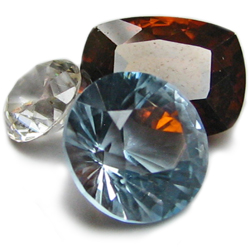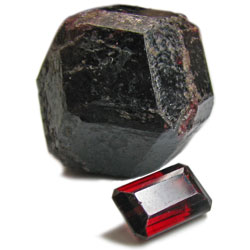
What are birthstones? According to the dictionary a birthstone is a gemstone popularly associated with the month or astrological sign of one's birth. This definition hardly conveys the fascination that peoples from various times and cultures have had with birthstones.
Throughout the ages people of all walks of life and most cultures have loved to adorn themselves with beautiful and rare jewelry. But, as they say, beauty is only skin deep and items with deeper meaning are much more precious to us. Stones representing the month of one's birth are more valuable to us and the lore behind and powers attributed to each stone are undeniably intriguing.
The actual gemstones representing each month have changed throughout the years and vary from region to region. In the United States the (American) National Association of Jewelers met in 1912 and officially adopted a list of birthstones. This list was updated by the Jewelry Industry Council of America in 1952. The American Gem Trade Association added tanzanite as a December birthstone in 2002 and in 2016 spinel was added as an additional birthstone for August.
What is your birthstone?
Click on a month or scroll down to find out!

Garnet
Garnets are not just one type of stone but are a set of closely related minerals differing in chemical composition. The various species of garnet include pyrope, almandine, andradite, grossular, and spessartine. Other types of garnets are rhodalite (a variety of pyrope and almandine), demantoid (a variety of andradite), and tsavorite (a variety of spessartine). Though known best for their varying shades of red, garnets actually come in a variety of colors. The word garnet is derived from the word pomegranate because the deep red varieties of the gemstone resemble the seeds of the pomegranate fruit.
Garnets were often used for jewelry in the Victorian times, during the 18th and 19th centuries, and have been found dating back to 3100 B.C. in Egypt. As with other red stones, legends link red garnets with blood. They were believed to stop bleeding and cure inflammations and were supposed to prevent bloodshed by smoothing discord between enemies. Ancient druggists ground garnets into poultice powder, red for fever and yellow for jaundice. It was also believed that wearing garnets would protect travelers from danger and a garnet losing its luster indicated impending doom.
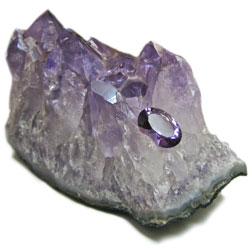
Amethyst
Amethyst is a purple variety of quartz crystal getting its color from irradiation, iron impurities, and the presence of trace elements. Although there are other purple gems such as sapphire and tanzanite, amethyst is the gem most commonly associated with the color. The purple color of amethyst can range from a light lilac to a deep, intense royal purple (BTW--amethyst was once only worn by royalty) and from brownish to vivid. Amethyst used to be as expensive as ruby and emerald up until the 19th Century when Brazil's large deposits were discovered.
Legend has it that amethyst was created when the wine god Backus drenched a crystallized maiden with the juice of the grape and was thought to prevent drunkenness, especially if the drinker used an amethyst cup. The word amethystos means "not drunk" in ancient Greek. Amethyst was also considered a cure for headaches, toothaches and gout in addition to providing protection from poisoning and plague. In addition, amethyst was believed to protect soldiers, bring victory, and help hunters capture wild beasts.
Other February Birthstones
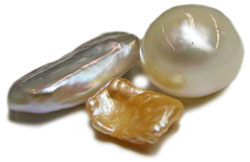
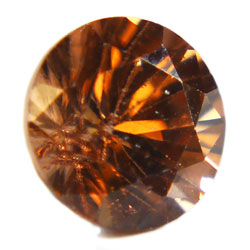
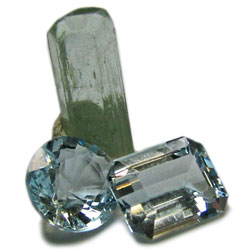
Aquamarine
Aquamarine is the green-blue to blue variety of the mineral beryl. Its color is usually a light pastel greenish blue, but heat treatment can give it a more bluish cast. The best gems combine high clarity with limpid transparency and blue to slightly greenish blue hues. Aquamarine forms large crystals suitable for fashioned gems and carvings.
Aquamarine's name derives from the Latin word for seawater and was said to calm waves and keep sailors safe at sea. According to legend, the mineral beryl, whose variations include aquamarine, emerald, and morganite, gives the wearer protection against foes in battle or litigation. It also makes the wearer unconquerable and amiable and quickens the intellect.
Other March Birthstones
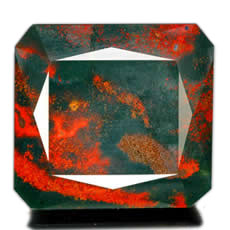
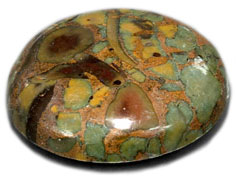

Diamond
Diamonds. Arguably the most prized and romanticized gemstone a diamond is also the hardest gemstone, measuring 10 on the Mohs scale of mineral hardness. Though 58 times harder than anything in nature it is comprised of just one element—carbon. Ironically another well-known mineral, graphite, is also comprised of pure carbon but is one of the softest minerals known, measuring less than 1 on the Mohs scale. How can this be? It’s all about the structure of the minerals. In a diamond, the carbon atoms are arranged tetrahedrally with each atom attached to four other carbon atoms which give diamonds a much higher density than graphite. In graphite the atoms are layered in a hexagonal structure, kind of like layers of chicken wire fencing. This makes graphite much less dense than diamond and also gives it the ability to conduct electricity which diamonds do not have.
Many ancient civilizations believed that diamonds were lightning made real on earth, the Hindus believed diamonds were created when bolts of lightning struck rocks. The name itself is derived from the Greek word, adamus, which means “invincible.” The legend goes that Chronos had changed a young man called Adamas into a precious stone which have him unbelievable strength and good fortune. He was also seen as an antidote for poisons and reinforced the love between married couples. Diamonds have been associated with great healing powers and were thought to cure brain disease, mental illnesses, skin diseases, and infections. Currently, and throughout history, diamonds are a symbol of eternal and lasting love.
Other April Birthstones
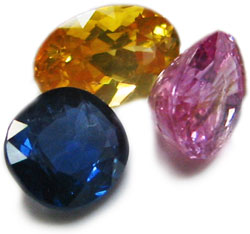

Emerald
Like aquamarine and morganite, emeralds are comprised of beryl and are considered the most valuable of the beryl gemstones. Despite being naturally heavily included, emeralds have mesmerized us throughout the ages and were mined in Egypt as early as 330 B.C. To increase clarity and enhance their beauty, natural emeralds are almost always treated with oil or resin. Though the availability of natural high-quality emeralds are limited, synthetic emeralds produced in a lab but sharing virtually all chemical, optical, and physical characteristics of natural emeralds are readily available. Though much less valuable, synthetic emeralds often outshine their natural counterparts in clarity and color.
As with many other gemstones emeralds have also been believed to have mystical powers. For example, it was thought emeralds would strengthen your memory, increase your eloquence, help you avoid evil spells, and reveal the truth of your lover’s statements. Holding an emerald under your tongue was believed to let you see the future. An emerald worn on a finger was supposed to burn at the approach of poison and to liquefy the eyes of snakes that looked at it. Emeralds worn as amulets were used to ward off epilepsy in children and it was believed the stone would shatter if it could not overcome a violent seizure.
Other May Birthstones
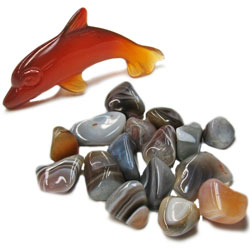
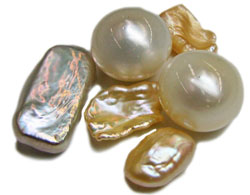
Pearl
Pearls are one of the few gemstones that are organic in nature. They are formed when a piece of foreign material makes its way inside the shell of a freshwater or saltwater mollusk, such as mussels, oysters, and abalone. The mollusk secretes soothing substances to ease the irritation of the foreign body. The pearl is built up in layers with each successive coat making it smoother and smoother. While pearls are formed naturally, without human intervention, most pearls available today are cultured by pearl farmers who insert a grain of sand into a mollusk to trigger pearl formation.
For thousands of years pearls have been a symbol of wealth and power, the oldest written mention of natural pearls was in 2206 BC. As with many gemstones, legends associated with pearls abound. For example, some thought the pearl was the pearl mollusk’s soul and an ancient Chinese legend claims it rains pearls when dragons battle in the sky. What you may not know is that pearls were also used for medicinal purposes as well. In fact, they have been used more consistently in medicine than any other gemstone. In the thirteenth century Albertus Magnus wrote that pearls helped cure mental illness and heartbreak and Anselmus de Boodt (1550-1632), a Flemish humanist, mineralogist, physician, and naturalist, had a recipe for pearl water which supposedly would restore strength and nearly raise the dead. The Chinese swallowed home-made pearl “pills” for immortality and other Asian cultures thought pearls cured fever, indigestion, bleeding, and eye ailments. Side note--pearls are composed of calcium carbonate which is used today to treat indigestion and other digestive ailments!
Other June Birthstones
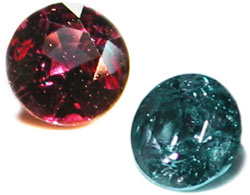
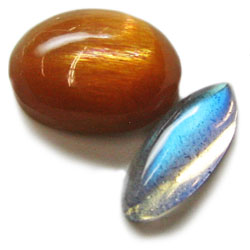

Ruby
Rubies have been revered since ancient times, particularly in Asian countries. Records suggest that rubies were traded along China’s North Silk Road as far back as 200 B.C. The name ruby derives from the word ruber, the Latin word for red, and is the red variety of the mineral corundum (all other colors of gem-quality corundum are called sapphires). Trace elements of chromium gives ruby its red color and also causes florescence, making rubies glow like a fire from within. The red fluorescence power of ruby helped build the first working laser in 1960 and today synthetic rubies, as well as natural rubies, are still used to make lasers in addition to watches and medical instruments.
The glowing fire within the ruby has enchanted many throughout the ages, Greek legends claimed that a ruby’s fire could melt wax and the Hindus believed that it burned so hot it could boil water. Rubies were also considered stones of protection, in Burma warriors believed that rubies made them invincible and would insert rubies under the skin to protect them from being wounded in battle. A ruby’s protection also extended to property and it was believed that wherever the stone dwelled nothing would be stolen or damaged. Wearing a ruby was also said to bring health, wealth, wisdom and success in love. Worn on the left side a ruby gave the ability to live in peace among enemies. Also, as with most red stones, rubies were believed to stop bleeding and cure inflammatory disease.
Other July Birthstones
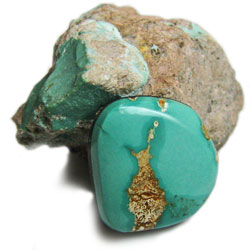
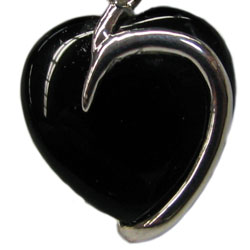
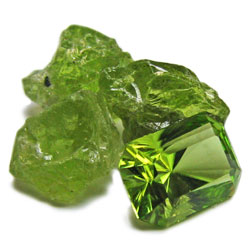
Peridot
The color in most gemstones is caused by different trace elements within a common mineral. For example the mineral beryl can be aqua blue (aquamarine), green (emerald), yellow or brownish yellow (golden beryl), or pink or light orange-red (morganite). Peridot, however, is one of the few gemstones whose color comes from the composition of the mineral itself, in this case olivine, and not from trace elements. Therefore, unlike sapphires comprised of corundum, the mineral olivine is only green in color. The shade may vary from yellowish-green to olive to brownish-green, however, depending on how much iron is present.
Peridot has been used for jewelry for thousands of years, dating back as far as the second millennium B.C. and ancient Egyptians called peridot the “gem of the sun”, believing it protected its wearer from terrors of the night. This lovely green gem has also been known as “the Evening Emerald” because its sparkling color looks brilliant any time of day or night. Said to possess healing properties that protect against nightmares and evil, peridot is believed to ensure peace and happiness. In Hawaii peridot symbolizes the tears of Pele, the volcano goddess of fire who controls the flow of lava.
Other August Birthstones
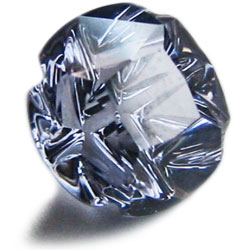

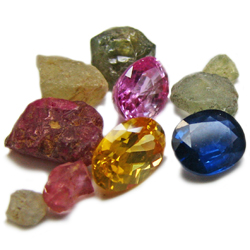
Sapphire
The name sapphire comes from the Latin word sapphirus and Greek word sappheiros meaning “blue stone”. Generally thought of as blue, sapphires actually come in all colors, although red sapphires are classified as rubies. Sapphires and rubies are comprised of the naturally colorless mineral corundum with trace elements like iron, titanium, chromium, copper and magnesium to give the mineral its color. Corundum measures 9 on the Mohs scale which makes it second only to diamond in hardness.
The sapphire has been popular since the Middle Ages when its celestial blue color symbolized heaven and attracted divine favor and wise judgement. Blue sapphires were thought to clear the mind and skin; cure fevers, colds, cataracts, and ulcers; and were taken as an antidote for poison and poisonous bites. In medieval Christian mythology the three crossbars of a star sapphire represented Faith, Home, and Charity and was used to ward off bad omens and the “evil eye”. Star sapphires were also considered powerful talismans that could protect travelers and seekers, so powerful that they would continue protecting the first wearer even after they had been passed on to another person.
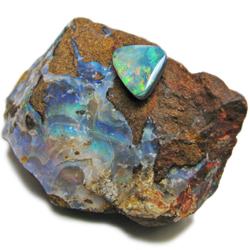
Opal
Opals are well known for their unique “play-of-color”, explained in the 1960s when scientists discovered that they are composed of microscopic silica spheres that diffract light to display various colors of the rainbow. Opals are often referred to by their “body color”, either black or white, which provides the background for the diverse display of colors that appear within the stone. Fire Opal, orange or red opals that may or may not show a play of color, and Boulder Opal, thin opal cut with the sandstone/ironstone matrix left on the back, are two of the most well-known opals though many other opal varieties exist. Australia produces 95% of the world’s supply of opal so it’s not surprising that opal is considered to be that country’s national gemstone. Also, according to an old Australian Aboriginal legend, opals were formed under the feet of the Creator when he came down from the heavens on a rainbow to deliver a message of peace for all mankind.
Opals are fragile stones, prone to breakage, and must be worn with care, which may be why some believe that it is unlucky to wear an opal unless it is your birthstone. In the past, however, opals were considered very lucky stones and in the Middle Ages people believed that the opal possessed the powers of each gemstone whose color appeared within the gemstone. The ancient Greeks believed opals gave their owners the gift of prophecy and guarded them from disease; ancient eastern cultures regarded opals as sacred, embodying the spirit of truth; and Europeans have long considered opals as a symbol of hope purity, and truth.
Other October Birthstones
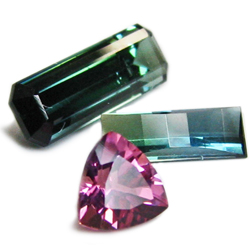
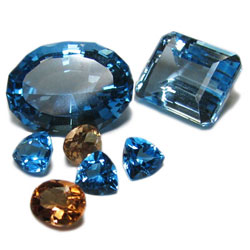
Topaz
Topaz is an aluminum silicate that contains fluorine and hydroxyl and, while colorless in its pure form, impurities cause topaz to take on any color of the rainbow. The word topaz derives from the ancient Greek name for St. John’s Island, Topazios. Throughout the ages all yellow gems were considered topaz even though many of them were actually other stones and, ironically, the yellow stones mined at St. John’s Island probably weren’t even topaz.
Ancient Egyptians believed that yellow topaz received its color from Ra, the sun god while Hindus believed topaz worn above the heart prevented thirst and assured long life, beauty, and intelligence. In fifteenth century Rome topaz was used to detect poisons, calm anger, and break spells. Considered a soothing stone, topaz is believed to calm tempers, cure madness, and eliminate nightmares.
Other November Birthstones
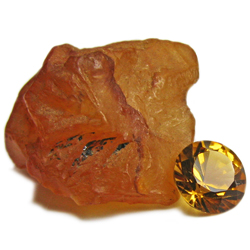
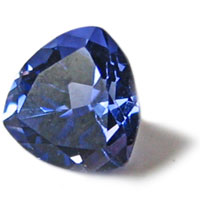
Tanzanite
Tanzanite is a stunning blue variety of the mineral zoisite. A relative newcomer in the gem world, it was discovered by a Masai tribesman in Tanzania and first mined in 1967 by a prospector named Manuel d’Souza who originally thought he was mining sapphire. The crystal was soon identified as a vibrant blue variety of zoisite, a mineral that had been around since the early 1800s, which is usually brown in color. Tiffany & Co. named the gem tanzanite and to date Tanzania is the only location in the world where this blue gem is found. Trace amounts of vanadium, mixed with extreme heat, cause the blue color. Tanzanite’s pleochroism can make the gem display different colors when viewed from different angles. Stones must be cut properly to highlight the more attractive blue and violet hues and most tanzanite is heat-treated to enhance those colors.
Other December Birthstones

